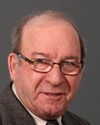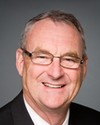There will always be people living on reserves and others who live off reserves.
According to our estimates, 40% of the aboriginal population will be living on reserves. Currently, the figure is approximately 30%. Therefore, there will be an increase. However, the hypotheses on which these projections are based must remain the same. And yet, we have no control over those factors. That is why our projections must be revised regularly, to take into account the most recent data. The following projections were made based on the 2005 data, which covers the period ending in 2017.




